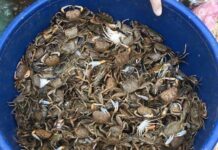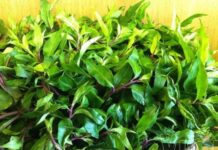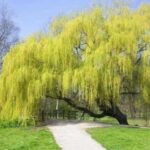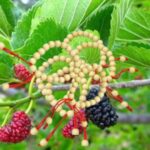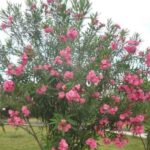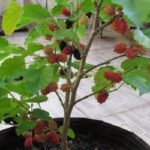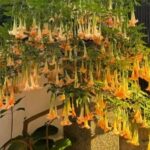4 Trees Not to Plant Indoors
In ancient times, a home was more than just a place for daily activities; it was a haven for cultural and family traditions.
Our ancestors had strict requirements for the environment surrounding their homes. Here are four trees that they believed should be avoided when planting indoors or in close proximity to the house.
1. Cypress (Bách in Vietnamese)
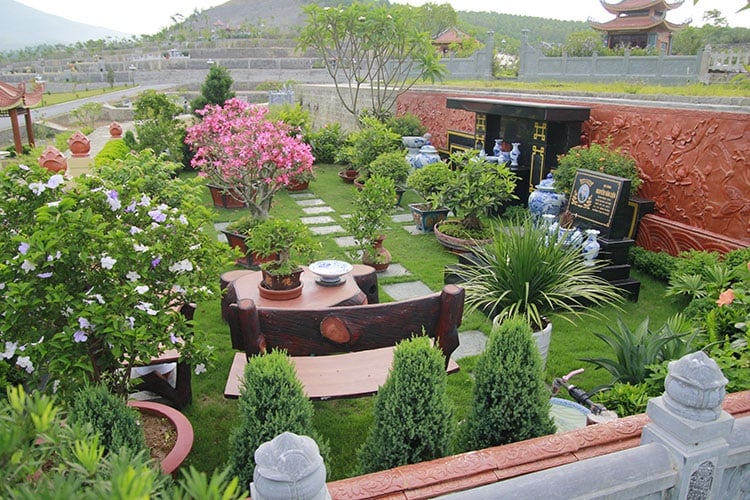
The cypress tree, associated with death and considered a “yin” tree, was believed to bring bad luck and illness if planted indoors.
Cypress trees are often found in cemeteries and are believed to bring “yin” energy, or bad luck. Our ancestors associated these trees with death and considered them unsuitable for indoor planting.
In reality, cypress trees have an incredibly long lifespan, sometimes reaching hundreds of years. They emit a strong scent that can cause allergies in some individuals.
With their tall, evergreen stature and dense branches, cypress trees block out light, creating a heavy and gloomy atmosphere that may affect the indoor environment.
Furthermore, the dense branches can block out sunlight, which, according to feng shui, can impact the family’s health and wealth.
Cypress trees also have an extensive root system that can damage foundations if not properly planted. Thus, our ancestors advised against planting cypress trees indoors.
2. Poplar (Dương in Vietnamese)
An old saying goes: “Don’t plant mulberry in the front yard, willow (Liễu) in the back, and ‘clapping hands’ in the middle.” The “clapping hands” tree refers to the poplar.
Our ancestors observed that strong winds caused the poplar’s leaves to rustle loudly, resembling the sound of clapping hands. This sound, especially at night, can be unnerving and disruptive to sleep.
Additionally, poplars are not ideal for planting in yards due to their rapid growth and brittle branches. Heavy rains and winds can cause branches to break and fall on houses or people, posing a safety hazard.
In spring, poplars produce fluffy seeds that resemble snow. While aesthetically pleasing, these seeds can trigger respiratory issues such as asthma and coughing.
Thus, our ancestors advised against planting poplars in the yard.
3. Mulberry (Dâu Tằm in Vietnamese)
The mulberry tree has been of significant economic value since ancient times, serving as food for silkworms and a favored fruit.
However, the word for mulberry in Vietnamese, “dâu,” sounds similar to the word for funeral, “tang.” As a result, our ancestors believed that planting mulberry trees indoors brought bad luck.
Despite its importance in agriculture, people remained cautious about planting mulberry trees near their homes to avoid misfortune.
Mulberry trees have an extensive root system that can damage foundations. Additionally, the sweet fruit attracts birds, insects, mice, and ants, creating an unpleasant indoor environment. The fallen fruit also makes yard cleaning a challenging task.
Therefore, our ancestors advised against planting mulberry trees in the yard.
4. Willow (Liễu in Vietnamese)
Willows, known for their aesthetic value in garden art, are also included in the list of trees not to plant near homes.
Since ancient times, willows have been associated with emotions of separation, sadness, and despair. As a result, our ancestors believed that planting willows in the yard was inadvisable.
Willows thrive in moist environments and exude a cold aura, impacting the indoor atmosphere and making people more susceptible to cold.
Planting willows can disrupt the yin and yang balance, attracting negative energy and creating a gloomy entrance to your home.
Moreover, willows have a soft, drooping appearance that can influence the spirit of those inside the house. A constant state of sadness and lack of vitality can hinder one’s ability to prosper and build a thriving family.
Thus, our ancestors advised against planting willows in front of the house to avoid bringing bad luck to the family.
When choosing indoor plants, our ancestors recommended selecting trees with strong yang energy and positive meanings, such as magnolia (Mộc Lan), jasmine (Tường Vi), peach (Hồng), pomegranate (Lựu), hawthorn (Táo Tàu), sweet osmanthus (Mộc Hương), and snowball viburnum (Bóng Tuyết).
3 Trees to Avoid Planting Near Gravesites
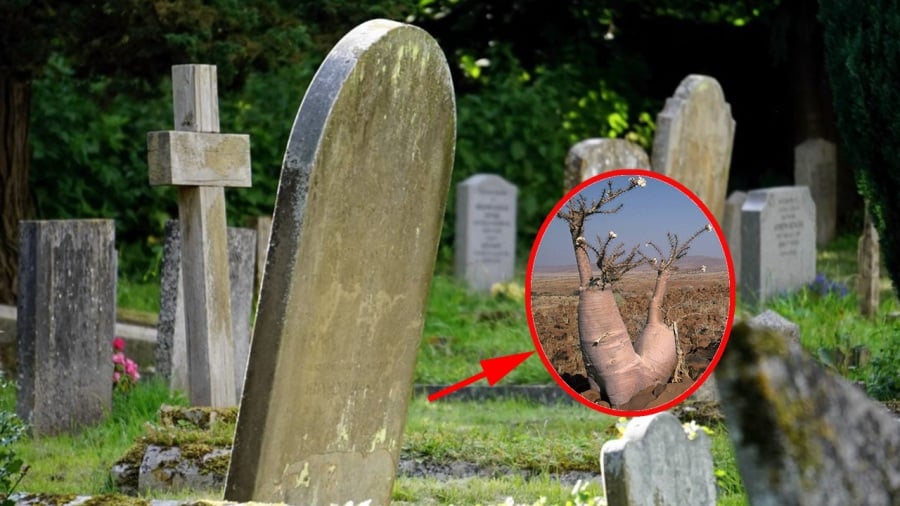
Trees Not to Plant Near Gravesites
-
Oleander (Trúc Đào in Vietnamese)
- Feng Shui Perspective: According to feng shui principles, oleander should not be planted near gravesites due to its toxic nature, which can be harmful to health if touched or ingested. Traditionally associated with death and sorrow, this plant is not conducive to creating a peaceful and respectful environment for the deceased. Its presence may negatively impact the energy flow and tranquility of the gravesite.
-
Cactus (Xương Rồng in Vietnamese)
- Feng Shui Perspective: Cactus, with its sharp spines, is considered inauspicious when planted near gravesites. In feng shui, plants with piercing shapes or characteristics are believed to create a barren and negative energy field. To honor the deceased, it is advisable to choose plants that symbolize peace and tranquility rather than those with potentially unsettling appearances.
-
Cat-tail (Cỏ Lau in Vietnamese)
- Feng Shui Perspective: Cat-tail is commonly associated with wetlands and has a tendency to spread rapidly. In feng shui, it is discouraged from planting near gravesites as it can create a sense of disorder and detract from the solemnity of the site. The presence of cat-tail may also impact the aesthetic beauty and dignity of the memorial space.
(This article is for reference only and not to be taken as absolute truth)
The Ancient Wisdom Uncovered: “The 5 Trees of Doom: Plant These and Watch Your Fortune Vanish”
The ancient belief that these five trees could bring bad luck and affect the prosperity of a household is an intriguing one. However, it is important to note that these beliefs are just that – ancient superstitions. In reality, these trees, like all flora, have their own unique beauty and ecological significance.
The Ancient Wisdom: Unveiling the Trees of Misfortune.
The five types of trees that are considered inauspicious to plant in residential areas due to traditional beliefs and feng shui principles are the mulberry, pear, pine, cypress, and “phat loc” (a type of tree believed to bring wealth and prosperity in Vietnamese culture). These trees are believed to bring bad luck or negative energy to the household, according to ancient superstitions. However, it is important to note that these beliefs may vary across different cultures and regions.
























